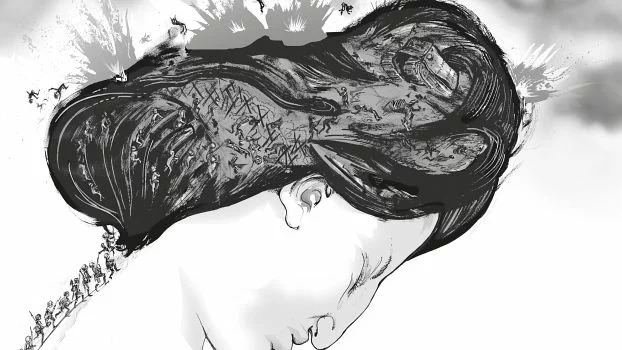Share Twitter Facebook Email Copy URL
Translated into 15 languages: Albert Scharenberg on the success of a comic about Rosa Luxemburg.

In late 2012, just as the New York office of the Rosa-Luxemburg-Stiftung had celebrated its grand opening, a certain Paul Buhle reached out to me via email. I knew Paul as an author whose extensive publications on the US and international left included among other things a biography of C.L.R. James and the famous Encyclopedia of the American Left. Yet until I read his email I hadn’t known he’d devoted his full energy to the production of left-wing comics since becoming an emeritus professor. Paul asked whether it might be possible that we—he and the New York office—collaborate on the publication of a graphic novel about Rosa Luxemburg.
In New York, we were immediately fired up by the idea. After the contractual details had been taken care of (Paul would take on the role of publisher, we would acquire the worldwide non-exclusive rights), we were ready to get started. Naturally we first had to find the right artist for the project—no easy task. On the basis of a tip we ultimately got in touch with Kate Evans, who lives in England. Kate had already published several comic books including a series about climate change and the bestseller The Food of Love, which is about breastfeeding. Although she didn’t know Rosa Luxemburg, this quickly turned out to be no problem at all, as Kate fell in love with Rosa at first sight.
With an enthusiasm evident in the finished product, Kate got down to business. And she did so while sticking to historical truth with precision, as can be seen in her extensive annotations—something that’s so unusual for comics.
Meanwhile, the renowned left publisher Verso Books had also expressed interest in the graphic novel about the standout political personality of the late 19th and early 20th century whose reputation across the international democratic socialist left had yet to diminish a hundred years after her murder.
While I’d read a lot of comics, I still ended up underestimating the mammoth amount of effort the production of a pictorial story like this one can entail. However, Kate managed to finish Red Rosa in just two years. We were there for her throughout the various production stages with advice and assistance. During her research in Berlin, Kate was also supported by further employees of the Stiftung.
The graphic novel has been an absolute triumph since its initial English-language publication in fall 2015, which was met with numerous reviews. Among others, it was named at the “Graphic Novel of the Year” by The Independent and The Observer. Verso has already sold over 23 thousand copies of the English version. Meanwhile, a number of translations have appeared (or are in the process of appearing), including in German, French, Spanish, Portuguese, Russian, Ukrainian, Swedish, Czech, Greek, Serbian, Slovenian, Turkish, Hebrew, Arabic, and Korean. Moreover, most of these translations are produced by local left-wing publishers. Additional requests, including for a translation in Thai, have been received by Verso.
As a dedicated internationalist, Rosa Luxemburg would no doubt have been enthused by the translation of the graphic biography into so many languages. In any case: the Red Rosa success story is not about to end any time soon.
Along with Stefanie Ehmsen, Albert Scharenberg founded and led the New York Office of the Rosa-Luxemburg-Stiftung from 2012 to 2018.
Translated by Adam Baltner



